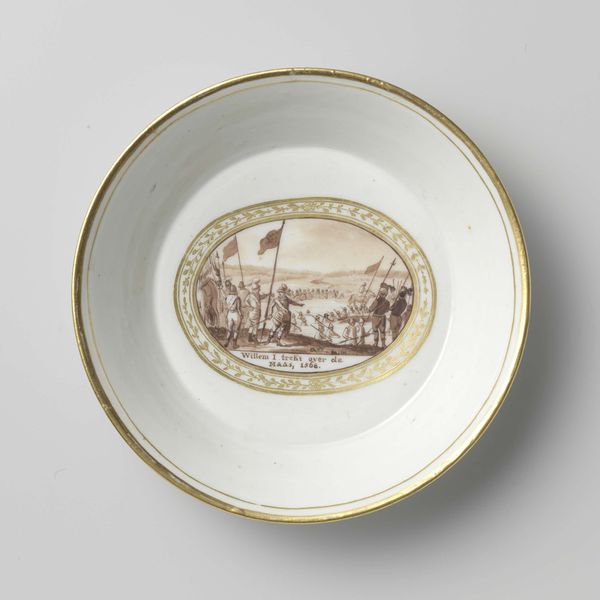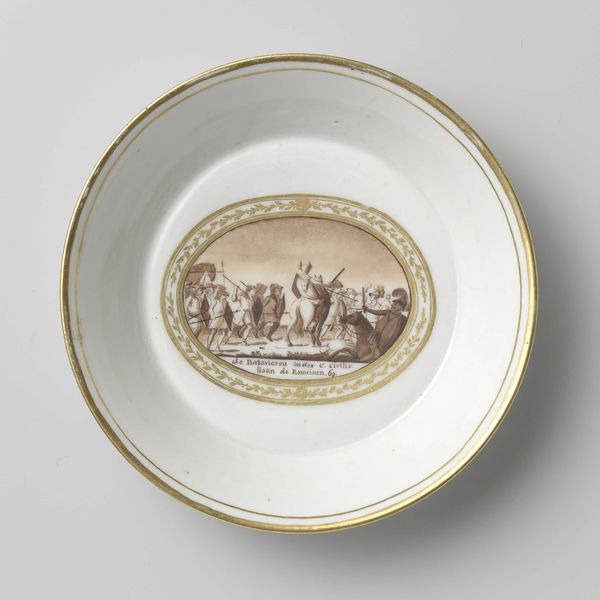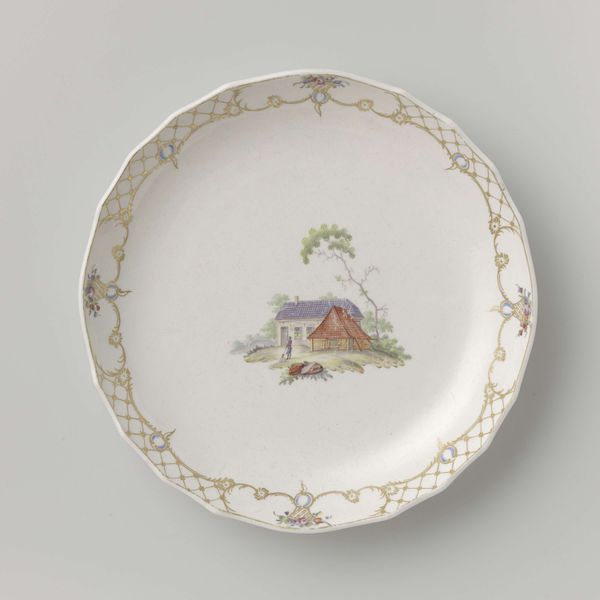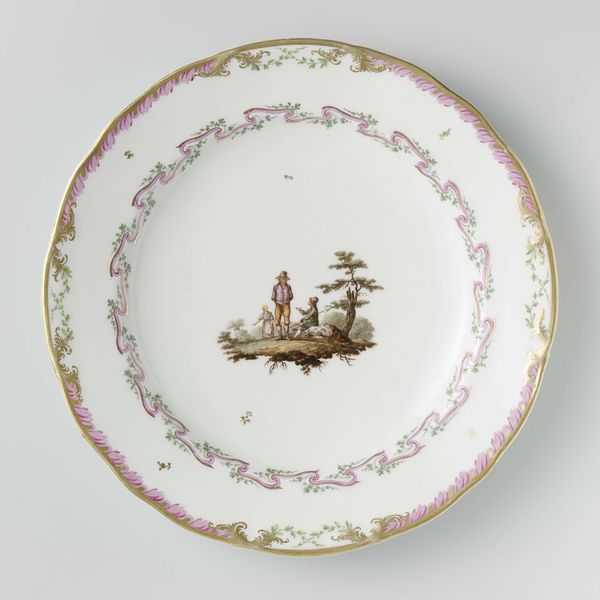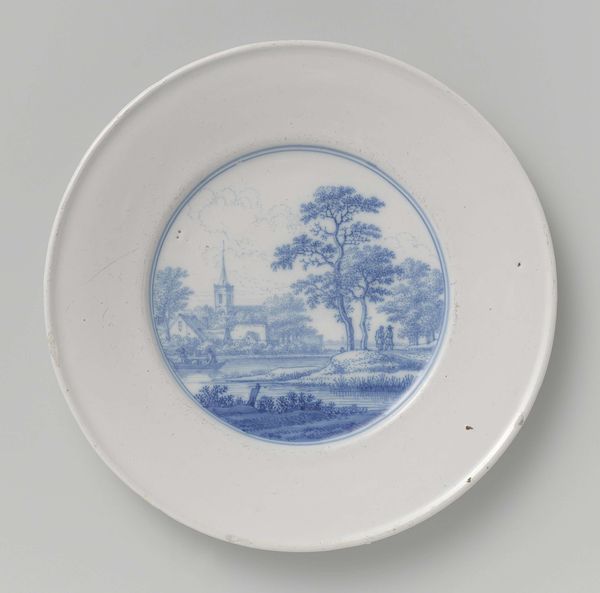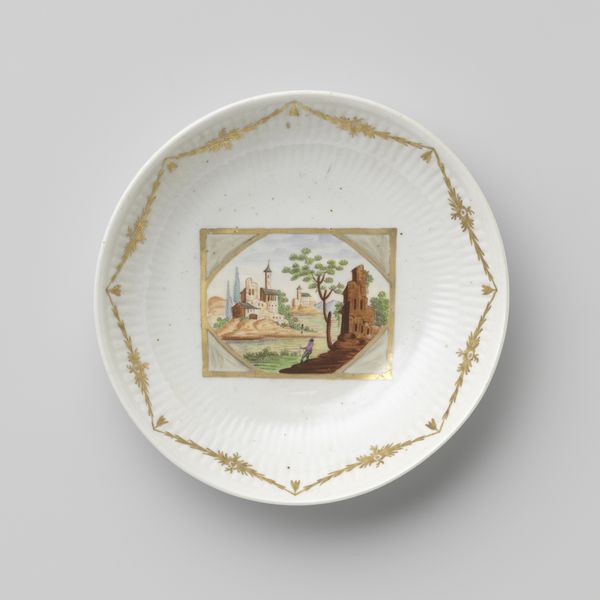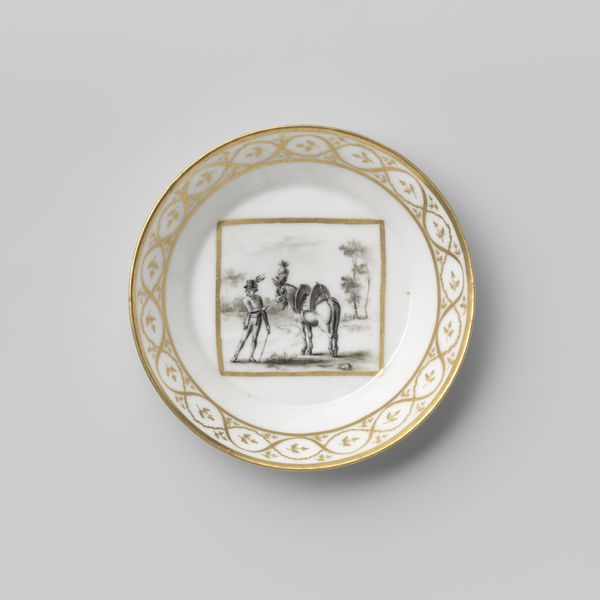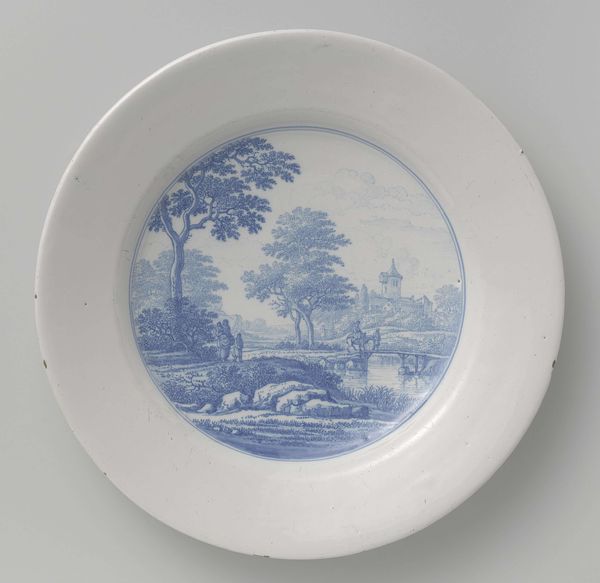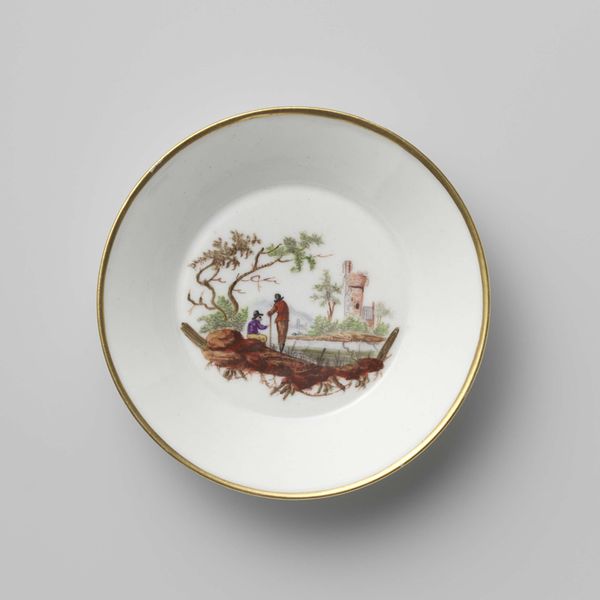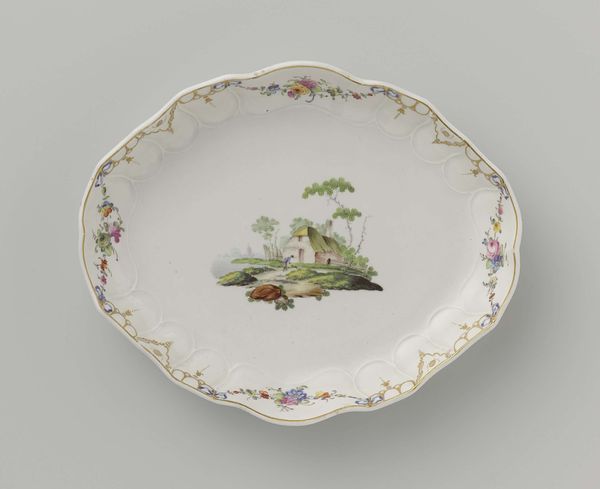
Saucer with an image of the Battle at the Duivendrecht Bridge after 1794
0:00
0:00
painting, ceramic
#
dutch-golden-age
#
painting
#
landscape
#
ceramic
#
genre-painting
#
history-painting
Dimensions: height 3 cm, diameter 12.7 cm, diameter 8.8 cm
Copyright: Rijks Museum: Open Domain
Editor: Here we have a porcelain saucer, made after 1794 by an anonymous artist. It's adorned with a sepia-toned scene: the "Battle at the Duivendrecht Bridge". I’m struck by the way such a violent event is captured on such a delicate, domestic object. What do you see in this piece, considering the symbols embedded within the imagery? Curator: It’s fascinating, isn't it? The placement of battle on an object of peace… what does that tell you? Notice how the scene is framed – almost enshrined – within the gilded oval. This transforms a contemporary event into a historical memento. The smoke billowing from the cannon becomes not just a representation of warfare, but a visual echo of social and political upheaval. How do you think the original owner viewed this battle, represented in such a stylized way? Editor: Perhaps they saw it as a point of pride, a moment of Dutch resistance worthy of immortalizing. But on a plate? That’s quite the statement. It's not exactly subtle, yet it's used for daily life. Curator: Exactly! Consumption, commemoration, and conflict entwined. Think about the colours: the white, gold and sepia. What cultural memories might they be evoking? What meaning is evoked by immortalizing this act upon a mundane plate, the colours providing subtle context. Editor: I guess it connects luxury with patriotism… showing you have the means to display this kind of art but also the social convictions to show a battle? It definitely pushes the boundaries of my perception. Thank you. Curator: My pleasure! May it prompt further examination of such powerful connections between symbols and daily existence.
Comments
No comments
Be the first to comment and join the conversation on the ultimate creative platform.

